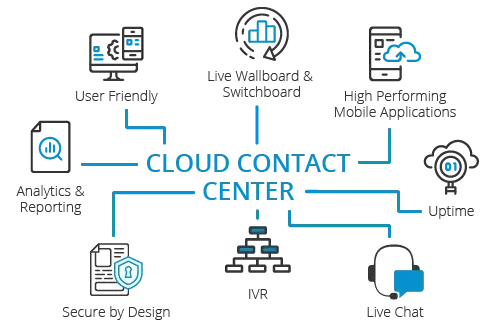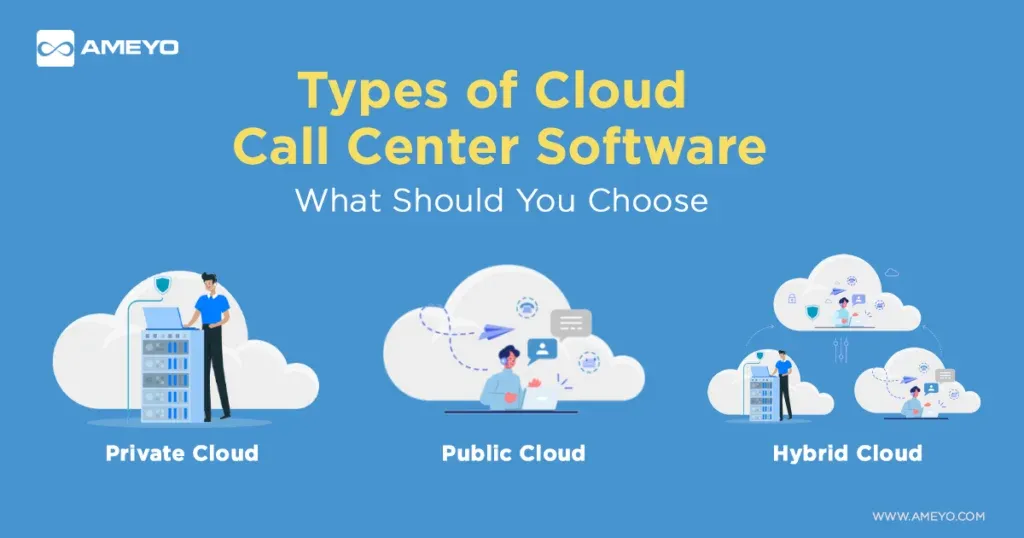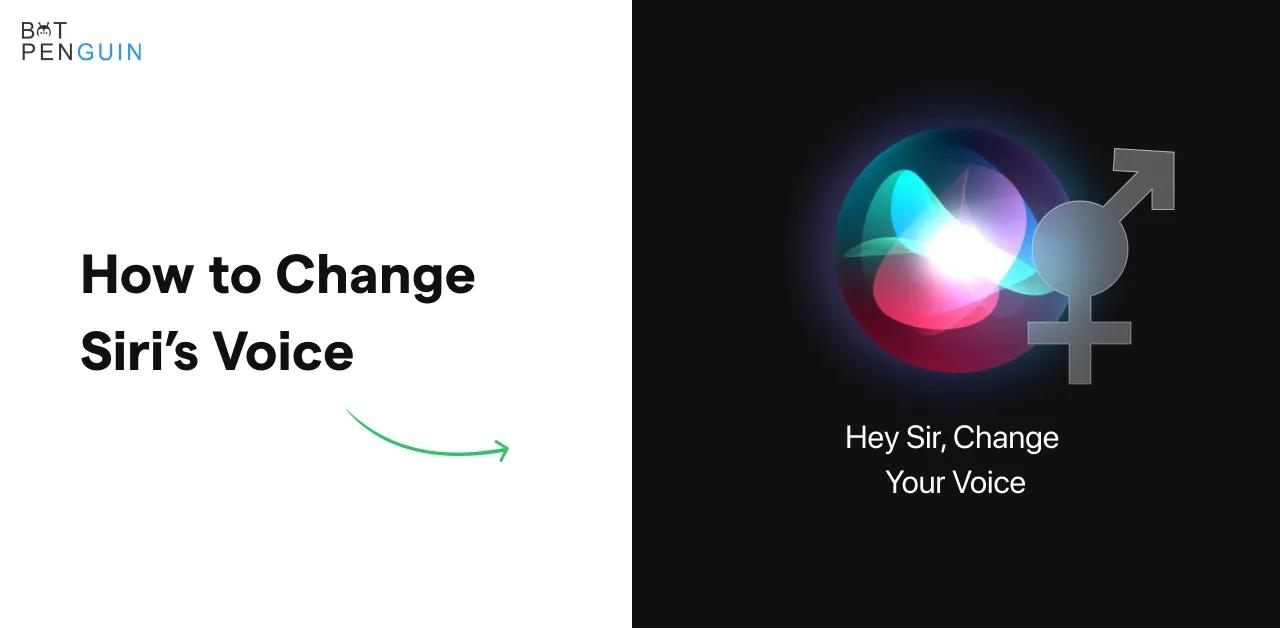If you're thinking about shifting your business operations to a cloud contact center, you're not alone. More and more businesses today are recognizing the many benefits that cloud communications can bring.
From improved customer service, greater flexibility, and cost savings, the advantages are undeniable. But decision-making isn't always straightforward, is it?
Admittedly, moving to the cloud may feel like a significant leap into uncharted territory.
It's normal to have concerns about system performance, data security, and transition challenges.
But don't worry! This blog post is here to help.
We'll explore key considerations when switching to a cloud contact center - from choosing the right service provider to integrating with your current systems. Let's dive in and simplify your transition.
Why Switch to a Cloud Contact Center?
Here are the key reasons why businesses should consider switching to a cloud contact center to enhance their customer service, improve efficiency, and promote scalability.
Increased Operational Efficiency
Cloud contact centers leverage advanced tools and technologies, streamlining operations and enhancing overall efficiency.
Businesses can benefit from features such as call routing, workforce management, and real-time analytics to optimize their contact center's performance continually.
Scalability and Flexibility
One of the main advantages of cloud contact centers is the ability to scale effortlessly. As a business grows or faces fluctuating demand levels, cloud contact centers can be easily scaled up or down as needed.
This flexibility ensures businesses can promptly address peaks in demand without overstretching their resources or compromising on service quality.
Cost Savings
By adopting a cloud contact center, businesses can experxience significant cost savings.
The elimination of expensive hardware, reduced maintenance costs, and flexible pay-as-you-go pricing models ensure that businesses only pay for the services and resources they need, contributing to overall cost-efficiency.
Improved Customer Experience
Cloud contact centers offer advanced features and integrations, leading to superior customer service.
Businesses can utilize AI-powered chatbots, data-driven personalization, and omnichannel support to ensure their customers receive seamless support across multiple touchpoints.
Remote Work Capabilities
With the rise of remote work, businesses need solutions that can support their workforce from anywhere.
Cloud contact centers enable agents to connect from any location with a stable internet connection, enhancing employee satisfaction and providing companies access to a more extensive talent pool.
Enhanced Security and Reliability
Robust security measures and reliable infrastructures are at the core of cloud contact center solutions.
Businesses can trust their service providers to implement comprehensive security protocols and ensure high levels of system uptime, safeguarding their data and ensuring uninterrupted customer service.

Who Should Consider Switching to a Cloud Contact Center?
SMEs often have limited resources, making a cloud contact center an attractive option.
Cloud solutions offer cost-effective scalability, allowing businesses to grow without the burden of significant upfront investments.
Furthermore, cloud-based systems provide access to advanced features and functionalities that may have been previously out of reach due to budget constraints.
Large enterprises deal with high call volumes and complex communication requirements. A cloud contact center as a service enables them to handle these challenges efficiently.
Cloud solutions provide the scalability and flexibility required to manage many interactions, ensuring prompt and effective customer service.
Additionally, cloud-based systems allow for integrating multiple channels, such as phone, email, chat, and social media, streamlining communication and providing a unified customer experience.
When should you consider switching to a cloud contact center?
Is it time to upgrade your contact center solution? Here are some signs that indicate it may be the right time to switch to a cloud contact center:
End of Legacy Contact Center Solution Life Cycle
Suppose your current contact center solution shows signs of age, such as frequent system failures or difficulty supporting new communication channels.
In that case, it indicates that you need a modern upgrade. Outdated systems can hinder your ability to provide efficient customer service, impacting customer satisfaction and overall business growth.
By transitioning to a cloud contact center, you can future-proof your operations and gain access to advanced features and capabilities.
Business Expansion or Seasonal Peaks
Growing businesses and seasonal industries often face challenges with managing fluctuating call volumes. A cloud contact center can be a game-changer in such scenarios.
Traditional on-premises systems may need help to handle sudden increases in demand, resulting in long wait times and frustrated customers.
The scalability of cloud solutions allows you to adapt to changing circumstances easily, ensuring you can efficiently manage high call volumes during peak periods without compromising the customer experience.
Limited Scalability and Flexibility
If your current contact center solution cannot scale and adapt to changing business needs, it's a strong indicator that you should consider switching to a cloud-based solution.
Traditional on-premises systems often require significant time, effort, and resources to accommodate growth or adjust to fluctuations in call volume.
With a cloud contact center, you can instantly scale your business up or down depending on demand, enabling better agility and superior customer service.
High Maintenance and Operational Costs
Maintaining and managing an on-premises contact center can be costly. Upfront hardware investments, ongoing maintenance, and the need for dedicated IT staff can strain your budget.
Cloud contact centers offer a more cost-effective alternative. By shifting to a cloud-based solution, you eliminate the need for expensive infrastructure and reduce maintenance costs.
Cloud providers handle hardware upgrades and system updates, allowing you to focus on your core business while saving money in the long run.
Suggested Reading-
10 Reasons to Switch to a Cloud Contact Center
How do you choose the right cloud contact center provider?
Selecting the right cloud contact center provider is crucial for a successful migration and long-term success.
Here's what you should consider during the evaluation process:
Assessing Business Requirements
Start by understanding your specific business needs. Identify the core functionalities you require from a contact center solution.
Do you need advanced call routing capabilities, real-time analytics, or omnichannel support? Consider your integration requirements as well.
Does the provider integrate with your existing CRM or other business systems?
Additionally, analyze your future growth plans to ensure the chosen provider can scale with your business.

Evaluating Provider Capabilities
Reliability should be a top priority when considering potential providers. Look for providers with high uptime guarantees and a solid track record of system availability.
Security is another critical aspect to evaluate. Ensure the provider has robust security measures, including data encryption, access controls, and compliance with industry standards.
Scalability is also important, ensuring the solution can grow alongside your business.
Comparing Pricing Models
Pricing is a significant consideration when choosing a cloud contact center provider. Compare the different pricing models available, such as subscription-based or usage-based pricing.
Subscription-based models provide predictability and may be suitable for businesses with consistent call volumes, while usage-based models offer flexibility and cost savings during periods of lower demand.
Be sure to consider any potential hidden costs and understand the value for money you'll receive from the provider's offering.
How do you plan and implement a successful migration?
Migrating to a cloud contact center requires careful planning and execution. Here are the steps to ensure a smooth transition:
Step 1: Assess Your Current Contact Center Infrastructure
Evaluate your contact center infrastructure, including hardware, software, and communication channels. A gap or inefficiency that has to be fixed during the migration should be identified.
This evaluation will act as a point of reference for comparison and assist you in determining the modifications and enhancements required for your new cloud contact center.
Step 2: Define Your Goals and Objectives
What specific improvements do you want to achieve? Are you aiming for better customer experience, increased agent productivity, or streamlined operations?
Setting clear goals will guide your decision-making throughout the migration process and ensure the transition aligns with your business objectives.
Step 3: Research and Select a Cloud Contact Center Provider
Research and compare different cloud contact center as a service providers based on your business requirements and goals.
Consider features, scalability, security, reliability, and pricing models. Request demos or trials to evaluate the user interface and functionality.
Select a provider that aligns with your needs and can deliver the desired outcomes.
Step 4: Develop a Migration Plan
Create a detailed migration plan that outlines the specific tasks, timelines, and resources required for the transition. To reduce interruptions, identify possible risks and create backup strategies.
Work with internal stakeholders and your selected supplier to guarantee a seamless and well-planned relocation process.
To keep everyone informed and involved throughout this time, communication is essential.

Step 5: Test and Train
Conduct thorough testing before fully implementing the cloud contact center as a service ensures all systems function as expected.
Test different scenarios and simulate real-world conditions to proactively identify and resolve any issues.
Provide comprehensive training to your agents and staff to familiarize them with the new system and its features.
This will help them adapt quickly and maximize the benefits of the cloud contact center
Step 6: Implement and Monitor
Once all preparations are complete, implement the cloud contact center solution according to the migration plan.
Monitor the system closely during the initial stages to identify performance issues or improvement areas.
Gather feedback from agents and customers to fine-tune the system and optimize its performance.
Conclusion
Throughout this blog, we've explored how switching to a cloud contact center can redefine your business operations. These platforms offer significant cost savings by eradicating expensive hardware requirements and routine maintenance hassles, allowing businesses to concentrate more on delivering superior customer service.
Capitalizing on the inherent flexibility of the cloud, companies can now adapt their resources based on demand, ensuring boosted efficiency and control over costs. To augment this cloud transition, a user-friendly chatbot like BotPenguin is an ideal ally.
BotPenguin amplifies customer engagement by providing around-the-clock support, curating personalized experiences, and facilitating seamless integration with popular communication channels.
So why wait? Explore the combined might of cloud technology and intelligent chatbots with BotPenguin today and take a step toward customer-experience excellence.
Suggested Reading:
Frequently Asked Questions (FAQs)
What are the benefits of switching to a cloud contact center?
Switching to a cloud contact center offers benefits such as scalability, cost savings, flexibility, seamless integrations, and improved customer experiences.
How can a cloud contact center improve agent productivity?
Cloud contact centers provide advanced features like automated workflows, intelligent routing, and integrated knowledge bases that can enhance agent productivity and efficiency.
What factors to consider when choosing a cloud contact center provider?
Consider factors like security measures, scalability, reliability, integration capabilities, pricing models, customer support, and customization options when selecting a cloud contact center provider.
How does a cloud contact center ensure business continuity?
Cloud contact centers offer built-in redundancy, disaster recovery options, and the ability to work remotely. This ensures uninterrupted operations even during unforeseen events or emergencies.
How can data security be ensured in a cloud contact center?
Reputable cloud contact center providers implement strong security measures like encryption, access controls, and regular audits to protect sensitive customer data and ensure compliance with data privacy regulations.



